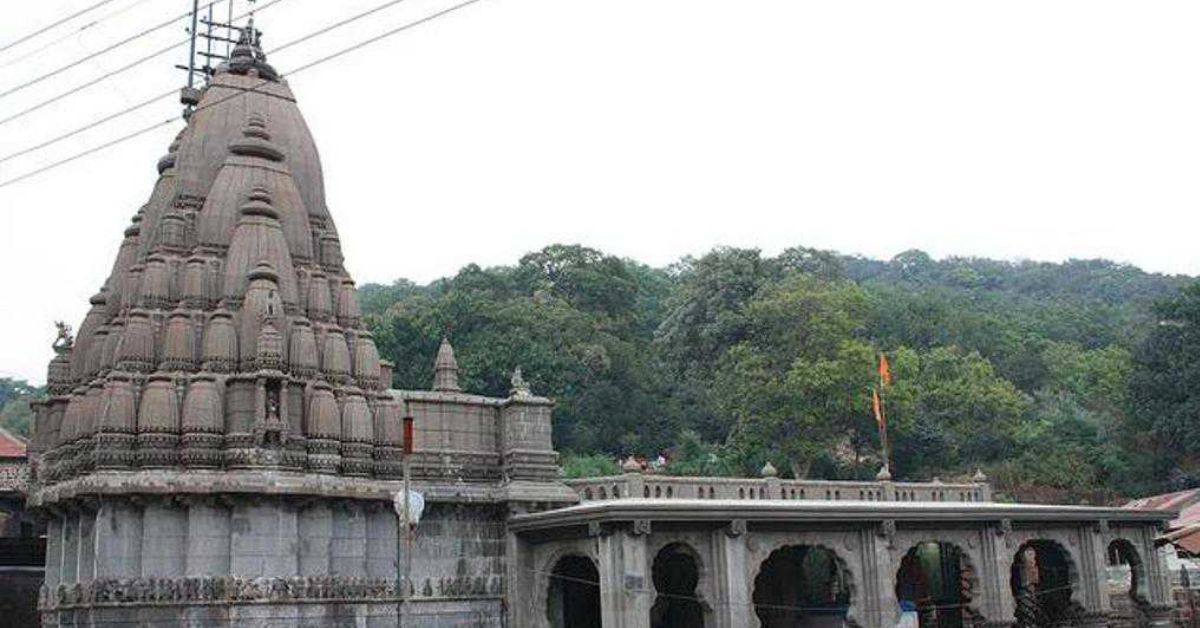Whispering secrets amidst the majestic Sahyadri Hills of Maharashtra, Bhimashankar unfolds as a place where nature’s embrace intertwines with deep spirituality. Lush forests teeming with life, cascading waterfalls that serenade the breeze, and a vibrant tapestry of wildlife paint a picture perfect for adventure seekers and pilgrims alike. Here, nestled in the heart of this captivating landscape, lies the ancient Jyotirlinga temple, a beacon for devotees and a treasure trove for travelers. Whether you crave the thrill of trekking along verdant trails, a soul-stirring escape in nature’s cradle, or a spiritual pilgrimage to one of India’s most revered temples, Bhimashankar promises an experience that will forever etch itself in your memory. Get ready to delve into the mystical allure, rich biodiversity, and captivating cultural heritage of Bhimashankar – your comprehensive travel guide awaits.
How to reach:
By Air:
For a smooth journey, fly into Pune International Airport, roughly 110 kilometers away. Taxis and car rentals are readily available at the airport, whisking you to Bhimashankar in 3-4 hours. Alternatively, catch a bus from Pune to Manchar or Ghodegaon, followed by a local taxi or bus for the final stretch. This route allows you to soak in the beauty of the Western Ghats.
By Train:
Pune Junction, about 110 kilometers distant, serves as the closest railway station. Taxis and car rentals are available for the 3-4 hour drive to Bhimashankar. Buses from Pune to Manchar or Ghodegaon, with onward connections by local transport, offer a budget-friendly option. This route benefits from frequent train connections between Pune and major cities.
By Bus:
Regular state transport and private buses connect Bhimashankar to various cities. Direct buses from Pune reach Bhimashankar in 4-5 hours. Traveling from Mumbai? Take a bus to Pune and transfer to a Bhimashankar-bound bus, or grab a less frequent direct bus from Mumbai itself. Buses from Nashik and Ahmednagar also connect to Pune or Ghodegaon, where you can find onward transport.
By Car:
Explore Bhimashankar at your own pace with a car rental. The scenic Western Ghats unfurl along the way. From Pune, the most popular route via NH60 and MH SH54 takes 3-4 hours. The drive from Mumbai, roughly 220 kilometers via NH61 and MH SH54, takes 5-6 hours. This route is especially stunning during the monsoon, with vibrant greenery and cascading waterfalls adding to the charm.
Best time to visit:
Summer (March to May):
Bhimashankar basks in warm weather during summer, with temperatures climbing between 23°C and 37°C. While not the busiest time to visit, the fewer crowds make it ideal for those seeking a quieter experience. Early mornings and evenings offer cooler pockets of time to explore. However, if you plan on trekking or spending extended hours outdoors, be prepared for the heat.
Monsoon (June to September):
The monsoon season paints Bhimashankar a lush, emerald canvas. Heavy rains revitalize the forests and send waterfalls cascading down the hillsides. Temperatures hover comfortably between 20°C and 30°C. Nature lovers will find this period ideal, with the Western Ghats bursting with vibrant life. However, the heavy downpours can make trekking trails slick and treacherous. Pack proper rain gear and check the weather forecast before your trip.
Winter (October to February):
Winter emerges as the crown jewel of Bhimashankar’s seasons. Pleasant, cool weather with temperatures ranging from 13°C to 28°C makes it perfect for trekking and sightseeing. Days are comfortable, while nights offer a refreshing chill. Crystal-clear skies and verdant landscapes further enhance the experience, attracting nature enthusiasts and pilgrims alike.
Attractions:
Bhimashankar Temple:
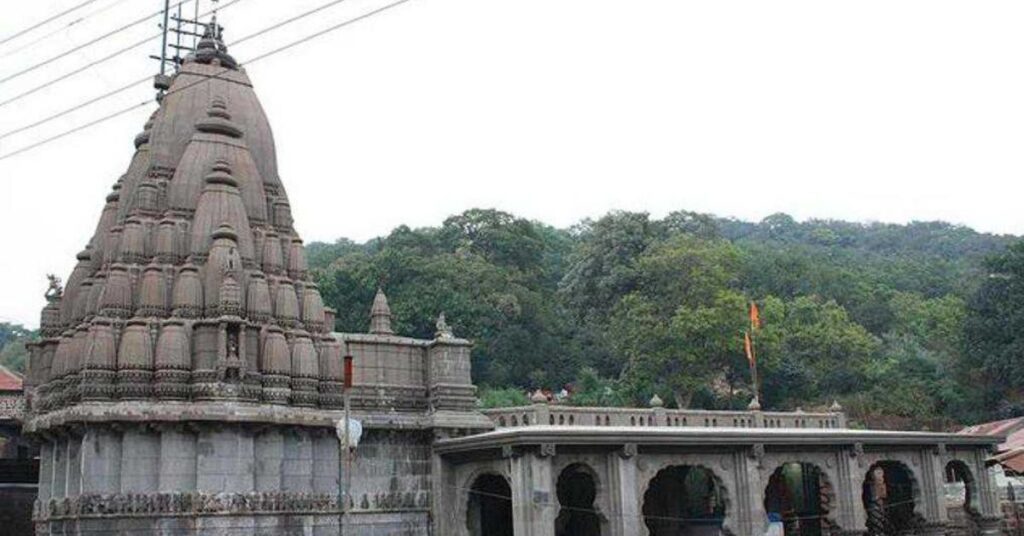
Deep within the verdant embrace of the Bhimashankar Wildlife Sanctuary lies a jewel of pilgrimage – the Bhimashankar Temple. Renowned as one of the twelve revered Jyotirlingas dedicated to Lord Shiva, this ancient edifice embodies the architectural grace of the Nagara style. Intricate carvings and exquisite stonework adorn its facade, whispering tales of a bygone era. Inside the sanctum sanctorum, a self-manifested Jyotirlinga resides, a beacon that draws thousands seeking spiritual solace and blessings.
The temple complex exudes an air of serenity, a sanctuary for both devotees and curious travelers. Lush greenery and breathtaking landscapes frame the temple, weaving a tapestry of spiritual significance and historical grandeur. Centuries-old traditions come alive here, with daily aartis and grand pujas during festivals like Mahashivratri painting a vibrant picture of devotion.
Bhimashankar Wildlife Sanctuary:
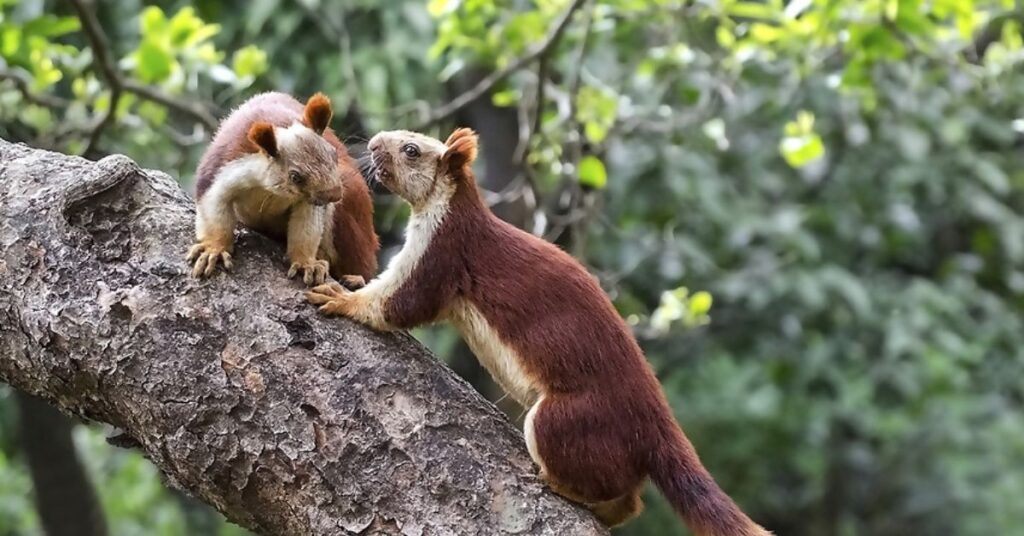
Unfolding across 131 square kilometers, the Bhimashankar Wildlife Sanctuary is a nature lover’s paradise. This verdant expanse shelters a kaleidoscope of life, making it a haven for wildlife enthusiasts. The star of the show here is the endangered Indian Giant Squirrel, also known as Shekru, with its impressive size and playful antics. But the cast extends far beyond – keep your eyes peeled for elusive leopards, graceful deer, and a symphony of bird calls echoing through the dense canopy.
The sanctuary’s heart lies in its lush forests, crisscrossed by sparkling streams and cascading waterfalls. Picture yourself trekking along well-defined trails, breathing in the fresh air and the earthy fragrance of the Western Ghats. With each step, the chance to spot wildlife in their natural habitat becomes a thrilling possibility.
Hanuman Lake:
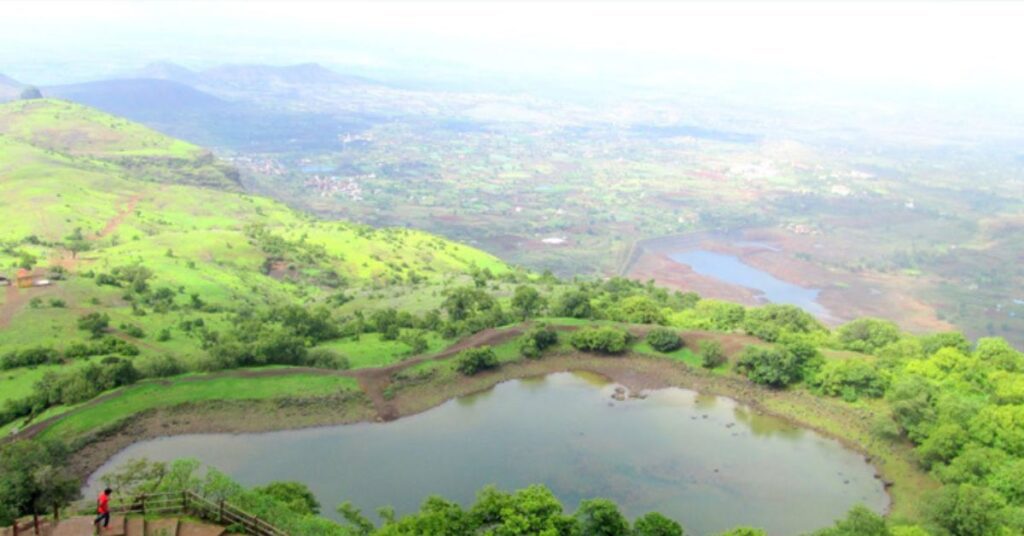
Nestled close to the Bhimashankar Temple, Hanuman Lake beckons weary travelers and nature enthusiasts alike. This serene spot offers a perfect escape, inviting you to unwind amidst the verdant embrace of the forest. Lush greenery fringes the lake’s tranquil waters, creating a picture-perfect scene that reflects the peacefulness of the surroundings. Photography enthusiasts will find themselves captivated by the mirror-like surface capturing the surrounding beauty. Birdwatchers, keep your ears peeled – a symphony of feathered friends frequents the area, adding to the tranquility.
Hanuman Lake is a welcome respite after a day of exploring the temple or conquering a trek. Here, you can simply soak in the serenity and reconnect with nature. The lake’s calm atmosphere and picturesque setting make it a favorite among families and anyone seeking a moment of quietude.
Gupt Bhimashankar:
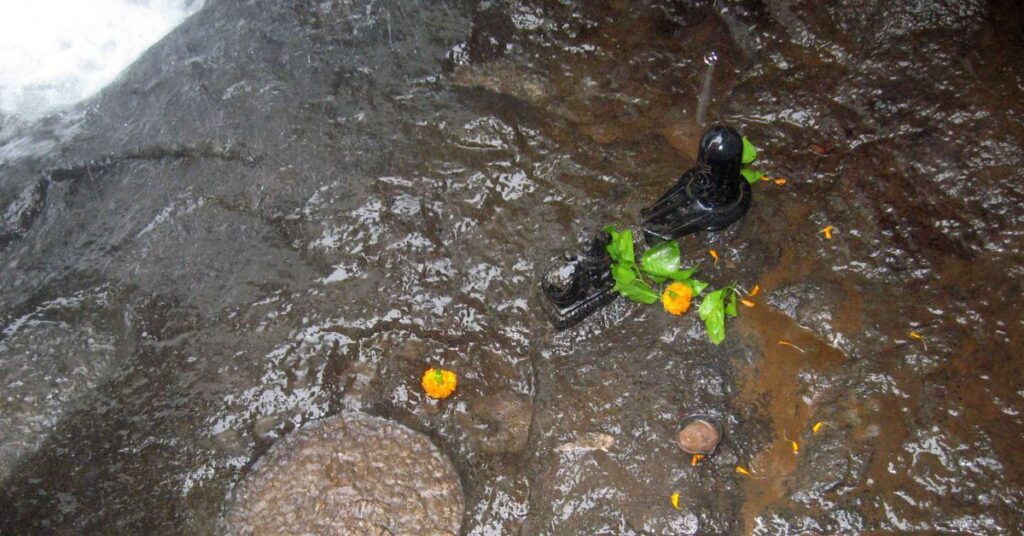
For those seeking an adventure beyond the usual tourist trail, Gupt Bhimashankar whispers promises of a mystical encounter. Nestled deep within the verdant embrace of Bhimashankar’s forests, this hidden gem unveils a smaller, yet equally significant, shrine dedicated to Lord Shiva. Believed to be as ancient and sacred as the main temple, Gupt Bhimashankar pulsates with a deep spiritual energy. The path to this secret abode unfolds through a moderate trek. Dense woods flank the trail, offering glimpses of the region’s thriving wildlife and diverse flora.
Local Experiences:
Temple Immersion: Witness the daily rituals and special pujas at the Bhimashankar Temple, immersing yourself in the spiritual heart of the region. During festivals like Mahashivratri, be captivated by the vibrant celebrations and the collective energy of devotees.
Wildlife Encounters: Embark on a thrilling exploration of the Bhimashankar Wildlife Sanctuary. Look out for the elusive Indian Giant Squirrel (Shekru) and keep your ears tuned for the symphony of birds chirping in their natural habitat.
Trekking Adventures: Challenge yourself with the Shidi Ghat (Ladder Route), a demanding trek with steep climbs and iron ladders. Alternatively, opt for the Ganesh Ghat route, a longer but more relaxed journey through scenic landscapes.
Village Interactions: Delve into the heart of rural life by visiting the villages of Khandas and Bhorgiri. Mingle with the locals and savor authentic Maharashtrian cuisine prepared by welcoming families.
Hanuman Lake Tranquility: Seek serenity at the picturesque Hanuman Lake. Unwind by the tranquil waters, perfect for picnics and nature walks. Capture the beauty of the lake and its lush surroundings with stunning photographs.
Gupt Bhimashankar Mystery: Embark on a trek to the hidden shrine of Gupt Bhimashankar, a mystical experience shrouded in serenity. Immerse yourself in the peaceful and undisturbed environment deep within the forest.
Panoramic Vistas: Witness breathtaking views from Nagphani Point (Cobra’s Hood) and Bombay Point. Be mesmerized by the sunrise and sunset painting the Sahyadri ranges in vibrant hues.
Seeking Blessings: Visit the Sakshi Vinayak Temple to seek blessings from Lord Ganesha, completing your pilgrimage to Bhimashankar with a visit to this significant shrine.
Spiritual Cleansing: Take a dip in the sacred waters of Mokshakund Tirtha for spiritual purification. Reflect and meditate in the serene and peaceful surroundings.
Cultural Tapestry: Immerse yourself in the local festivals and traditions, experiencing the rich cultural tapestry of the region. Be captivated by traditional music and dance performances by local artists.
Travel tips:
Clothing: Comfortable, sturdy shoes are a must, especially for trekkers. Pack breathable cotton clothes for summer and layers for winter, as mornings and evenings can get chilly. During the monsoon, bring a waterproof jacket and umbrella.
Health and Safety: Pack a basic first-aid kit and any personal medications you require. Stay hydrated by carrying sufficient water, particularly on treks. Apply insect repellent to ward off mosquitoes and insects.
Trekking: Consider hiring a local guide for the challenging Shidi Ghat (Ladder Route) if you’re new to trekking. Always inform someone about your trek plans and estimated return time. Start early to avoid the heat.
Local Courtesy: Respect local customs and traditions, especially at temples and in villages. Remove footwear before entering temples and dress modestly. Seek permission before photographing people or private property.
Getting Here: If using public transport, check bus and train schedules beforehand as options might be limited. Renting a car or hiring a taxi offers more flexibility. Be prepared for winding and narrow roads, especially in the Ghats, if you choose to drive.
Accommodation: Book your stay in advance, particularly during peak seasons and festivals. Options range from basic guesthouses to comfortable resorts, catering to various budgets and preferences.
Food and Drink: Savor the local Maharashtrian cuisine, featuring dishes like Pithla Bhakri, Vada Pav, and Misal Pav. Stick to bottled or filtered water to avoid any health issues.
Environmental Responsibility: Minimize your environmental impact by using a reusable water bottle and avoiding single-use plastics. Dispose of waste properly and refrain from littering.
Staying Connected: Mobile network coverage might be limited in some areas. Inform family and friends about your travel plans beforehand. Download offline maps and essential travel apps before your trip.
Respecting Wildlife: Maintain a safe distance from wild animals and avoid feeding or disturbing them. Follow the Bhimashankar Wildlife Sanctuary guidelines to ensure the safety of both visitors and wildlife.
Conclusion
Unwind amidst the spiritual and natural wonders of Bhimashankar. Seek blessings at the revered Bhimashankar Temple, a Jyotirlinga, then lose yourself in the verdant expanse of the Bhimashankar Wildlife Sanctuary. Hike challenging trails like Shidi Ghat or find serenity by the tranquil Hanuman Lake. Explore hidden sanctuaries like Gupt Bhimashankar and marvel at breathtaking vistas from Nagphani Point. Immerse yourself in the vibrant culture of nearby villages. Plan your Bhimashankar escape for any season and ensure a smooth adventure with travel tips from Xplro.com, your ultimate guide to unlocking Bhimashankar’s magic.
FAQs
What is Bhimashankar known for?
- This is renowned for its ancient temple dedicated to Lord Shiva, recognized as one of the twelve Jyotirlingas in India, situated within the picturesque Bhimashankar Wildlife Sanctuary.
How do I get to Bhimashankar?
- To reach here, you can travel by road from Pune or Mumbai, utilizing options such as buses, taxis, or private cars. The nearest major railway station is Pune Junction, approximately 110 kilometers away from Bhimashankar.
What is the ideal time to visit Bhimashankar?
- The optimal time to visit this place is during the winter months, from October to February, when the weather is mild and pleasant. Alternatively, the monsoon season (June to September) offers lush green landscapes but involves slippery trekking trails.
Are there trekking opportunities in Bhimashankar?
- Yes, this place presents several trekking routes, such as the challenging Shidi Ghat and the more manageable Ganesh Ghat, catering to both seasoned trekkers and beginners looking to explore the region’s natural beauty.
What are the accommodation options in Bhimashankar?
- Accommodation in Bhimashankar ranges from guesthouses to resorts, providing choices suitable for various budgets and preferences. It is advisable to book accommodations in advance, especially during peak tourist seasons and festivals.
Is photography allowed in Bhimashankar Wildlife Sanctuary?
- Photography is permitted in Bhimashankar Wildlife Sanctuary; however, visitors are encouraged to respect the natural habitat and wildlife, avoiding disturbances during their photographic activities.
What should I wear when visiting Bhimashankar?
- When visiting Bhimashankar, it is recommended to wear comfortable clothing suitable for trekking, along with sturdy footwear. During winter, layering clothing is advisable to stay warm during cooler mornings and evenings.
Are there any local festivals celebrated in Bhimashankar?
- Yes, Bhimashankar celebrates Mahashivratri with significant enthusiasm, attracting devotees and visitors who participate in religious rituals and festivities at the Bhimashankar Temple.
Can I visit Bhimashankar with children?
- Bhimashankar is family-friendly, but caution should be exercised with young children, particularly on trekking routes, ensuring adequate preparation and safety measures are in place.
Are there ATMs and medical facilities available in Bhimashankar?
- Limited ATM facilities and medical services are available in Bhimashankar. Visitors are advised to carry sufficient cash and basic medical supplies for their convenience and emergencies.
What are some nearby attractions to visit from Bhimashankar?
- Nearby attractions include Hanuman Lake, Nagphani Point, and nearby villages such as Khandas and Bhorgiri, offering diverse experiences ranging from natural landscapes to cultural insights.
Is Bhimashankar accessible for differently-abled individuals?
- Certain areas of this place, including the temple, may be accessible with assistance for differently-abled individuals. However, trekking routes and certain locations within the sanctuary may pose accessibility challenges.




